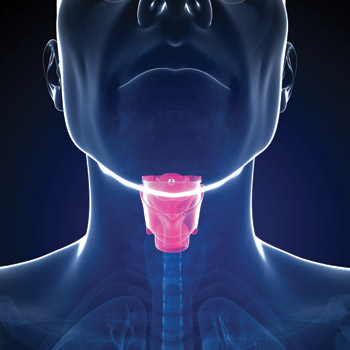Anxiety disorders a common problem in primary care
Anxiety disorders have a prevalence of almost 20% in primary care and can result in increased divorce rates, underemployment, undereducation, and increased reliance on public assistance.
Between 80% to 90% of the management of depression and/or anxiety happens in primary care, not in a psychiatric or psychological setting, and the condition can affect as much as one-fifth of a typical patient panel, said Heidi Combs, MD, MS, medical director of inpatient psychiatry at Harborview Medical Center in Seattle.
It's enough to induce a panic attack in an internist.
In a talk during ACP's Internal Medicine Meeting 2021: Virtual Experience, Dr. Combs offered advice for primary care physicians on diagnosis of anxiety and what to do next.

Anxiety disorders often begin in a patient's teens and early 20s, and they are twice as common in women compared to men. Half of patients with social anxiety will meet the criteria in their junior-high years, she said, and there is significant familial history for panic disorder, generalized anxiety disorder, obsessive-compulsive disorder, and phobias.
These conditions have a waxing and waning course over life. “So patients will tell you, ‘I have had a run of panic, and I don't know what's going on,’” Dr. Combs said. “Then sometimes they'll say, ‘My anxiety, it doesn't seem so bad.’ This can happen outside of external stresses or changing meds.”
Comorbidities are the rule rather than exception, she added. Half of patients with anxiety disorders have mood disorders, and many of them have more than one anxiety disorder. “So when you see one disorder, think of another disorder. Screen for those things.”
Anxiety disorders are the most common psychiatric diagnosis in the United States, with a prevalence of 13% in the general population and almost 20% in primary care, Dr. Combs said. “That means one in five of your patients has at least one anxiety disorder, one in five. So these are patients that you spend lots of your time with,” she said.
These disorders result in increased divorce rates, underemployment, undereducation, and increased reliance on public assistance, Dr. Combs said. “There's a huge amount of suffering if you actually look at the impact on functional impairment. For individuals with anxiety disorders, it's similar to major depression and chronic illnesses like diabetes,” she said. “It confers an increased risk of suicide, both for acute and chronic anxiety.”
Anxiety may play out in medicine in surprising ways, Dr. Combs added. Consider the example of a 38-year-old woman with chief symptoms of fatigue and back pain. Is the internist's first thought of a mental health problem?
“Commonly, patients with anxiety disorders come in reporting physical and sometimes psychological distress,” she said. “They [report] somatic issues, pain, sleep, disturbance, and depression. This means they're not coming in saying, ‘I feel anxious.’ They're coming in saying, ‘I'm really tired. My back hurts. I ache. My sleep is really bad.’”
After diagnosing an anxiety disorder, the first-line pharmacologic treatments are selective serotonin reuptake inhibitors (SSRIs) and serotonin and norepinephrine reuptake inhibitors. “The bottom line for the pharmacotherapy is cranking up serotonin,” said Dr. Combs.
She advised internists to warn patients about the initial effects of these drugs, as “Their anxiety may increase.” Another warning was not to increase doses of SSRIs. “The higher doses don't necessarily give you more bang for your buck, and they're better tolerated at lower doses,” Dr. Combs said.
When prescribing a benzodiazepine, she avoids alprazolam because of its short half-life, which results in more rebound anxiety. If she prescribes these drugs at all, her top choice is either clonazepam or lorazepam.
“Do I love using benzodiazepines? No, I do not. Do you love using benzodiazepines? No, you do not,” Dr. Combs said. “So we don't use them whenever we can. But sometimes you end up needing them.” She sets expectations from the start, counseling patients that this is not a long-term prescription but is used transiently to bridge to another medicine, and tapers a benzo by about 25% per week when weaning patients to a preferable drug class.
“You have really great treatment options for these patients,” Dr. Combs said. “There's a huge amount of suffering associated with these disorders, and they're highly treatable, so please look for them and treat them.”





